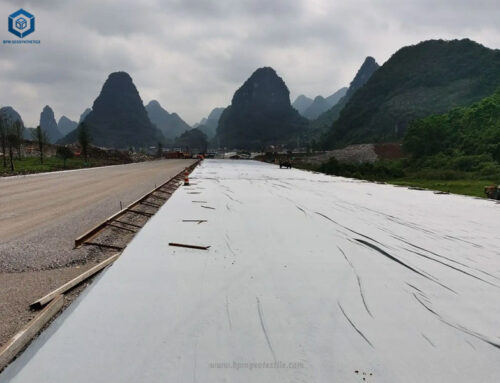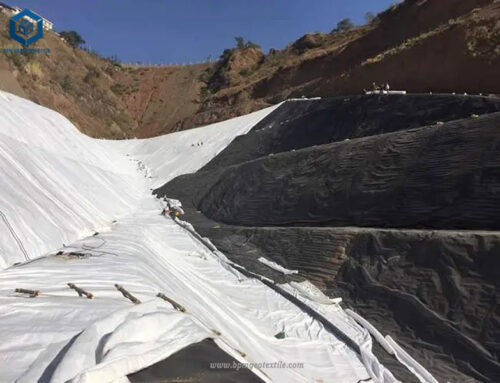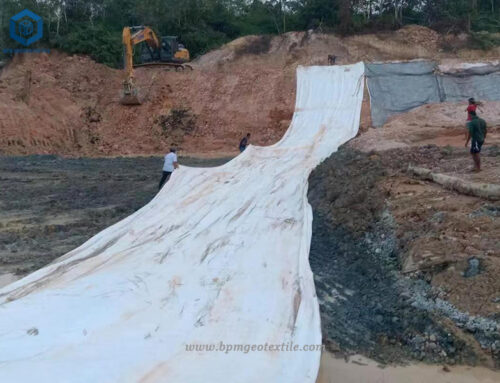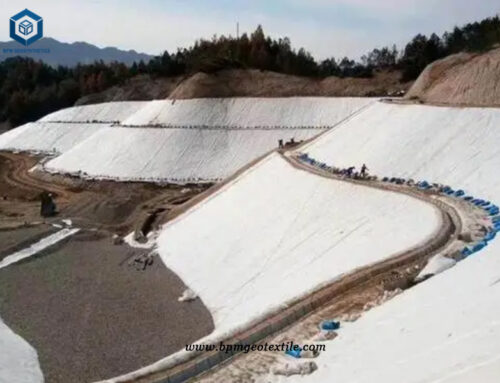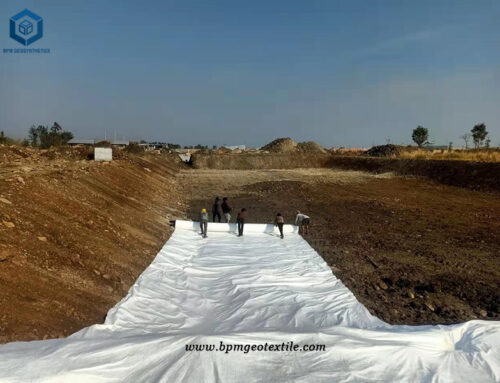High strength non woven geotextile is made from high-quality continuous polypropylene fibers by the method of forming and consolidating polyester filaments. Its fibers are arranged into a three-dimensional structure. The continuous filament geotextile is a new type of building material for geotechnical and civil engineering applications, it is also widely recognized as the choice for drainage applications, pavement interlayers and separation/stabilization beneath paved and unpaved roads. In addition to having good stretch, puncture resistance and other effects, it also has high acid and alkali resistance, aging resistance and other effects. Filament high strength non woven geotextilis widely used for separation, filtration, drainage, protection functions in civil engineering projects.
Case study
- Location – Myanmar
- Product – High Strength Non Woven Geotextile
- Purpose – Reinforced Embankment for Highway
Project Background
Our Myanmar client undertook one road project. The new route that crosses the edge of a mud lake containing significant peat deposits. Traditionally, peat soils would have been displaced or excavated and replaced with granular fills. However, the following limitations preclude traditional methods:
- No disposal site available for organic soil
- Since the area is considered a wetland, there are environmental issues associated with excavating organic soils
- Involving a lot of soil results in a large cost
- Allow direct observation of the foundation, requiring expensive dehydration.
- As a result of these constraints, the design engineer proposed the feasibility of constructing a dike on organic soil.
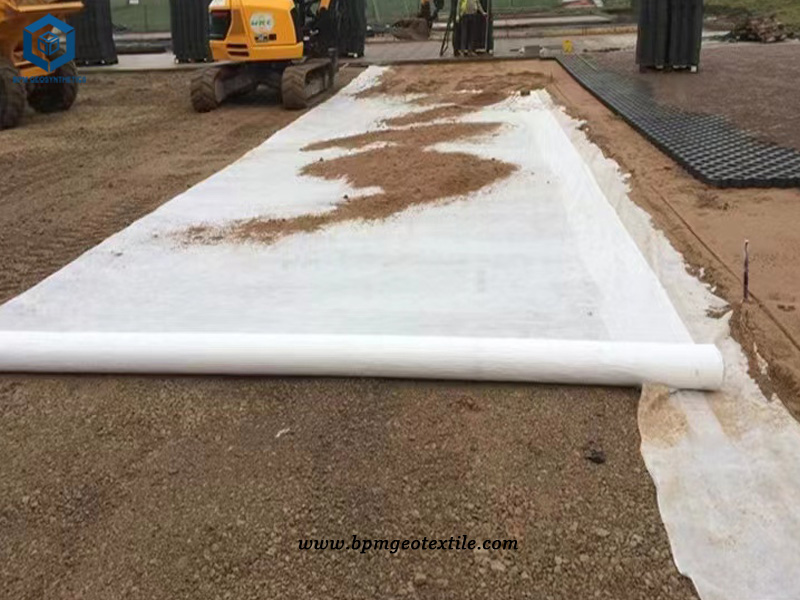
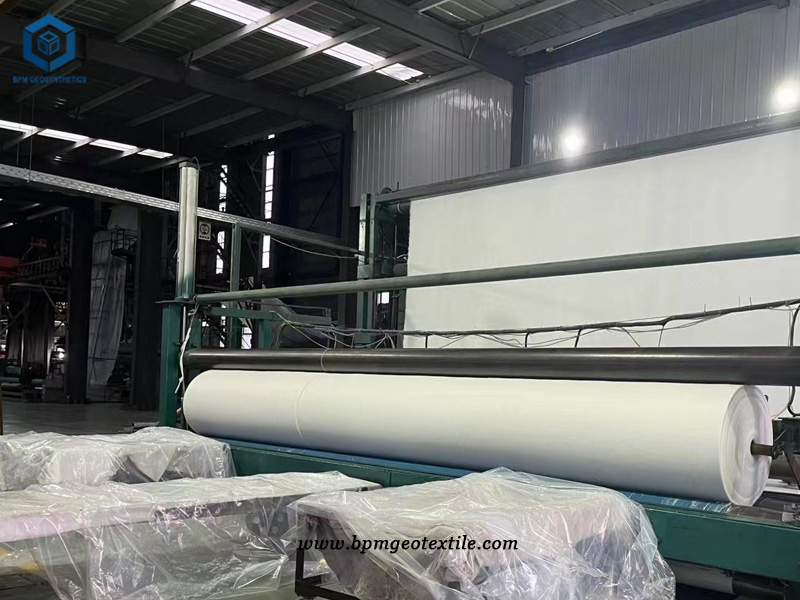
Issue
Through the analysis of the technicians, it is obvious that without some form of subgrade or embankment reconstruction, it is impossible to build an embankment. Since excavation and replacement were not viable alternatives, other methods were considered, including the use of wick drains, stone pillars, lightweight fillers, piles, and soil reinforcement. After comparing the methods in terms of feasibility, performance and cost, it is clear that the use of geosynthetics is the most effective alternative. Due to the high corrosion potential and relatively high cost in acid organic soils, the use of metal reinforcements is excluded.
Solution
In response to the questions raised by customers, our BPM company recommended providing non-woven geotextiles for reinforcement. By placing a high strength non woven geotextile at the bottom of the embankment, the stability of the embankment can be improved by increasing the shear strength provided by the geotextile. In addition, the high strength non woven geotextile theoretically provideed additional stiffness to the bottom of the embankment, resulting in a more even distribution of embankment loads. Since the geotextile should also reduce the shear stress at the interface of the embankment-subgrade, it helps to reduce the possibility of lateral expansion of the embankment on the weak subgrade.
Myanmar customers and local technicians described our company’s suggestions and believed that our company’s suggestions could solve the problems they are currently facing. So we sent samples of non-woven geotextiles weighing 200, 300 to the customer for testing. After the customer’s inspection, 200g of geotextile was purchased for the roadbed reinforcement project. We were very satisfied with this cooperation client.
Benefits
The benefits of using non-woven geotextiles to reinforce the roadbed
1) It is allowed to initially support the vehicle on the soft soil sediment so that the filling can be placed.
2) Provide more controllable construction, less disturbance and less displacement of organic soil during construction.
3) Prevent the embankment from penetrating downward and entering the soft roadbed.
4) Maintain the integrity and unity of embankment construction. This is not expected to reduce the settlement of the embankment, but it is assumed to provide more uniform settlement. Therefore, it is expected that geosynthetics will reduce the differential settlement of the transition point of organic soil thickness.
The benefits of Non Woven Geotextile
1) Good temperature resistance: The temperature of the asphalt mixture during hot paving is about 150℃, and the temperature of the modified asphalt is higher. The PET Filament geotextile is required to not only not melt or soften at this temperature, but also to maintain normal operation. It is required to be able to withstand temperatures above 170°C.
2) Good asphalt adsorption: First, spray the permeable layer of asphalt evenly, and then spread the PET Filament geotextile. The PET Filament geotextile should be able to absorb the asphalt and reach saturation. The PET Filament geotextile is required to have good adsorption capacity.
3) Good uniformity: PET Filament geotextile is an anisotropic material. To ensure uniform strength, the two-way strength ratio should not be greater than 12. Generally, PET Filament geotextile should be used instead of woven geotextile.
4) Aging resistance: PET Filament geotextile are required to maintain normal working conditions within the service life of the pavement.
5) Water permeability: PET Filament geotextile also require good water permeability, which can be measured by the vertical permeability coefficient.
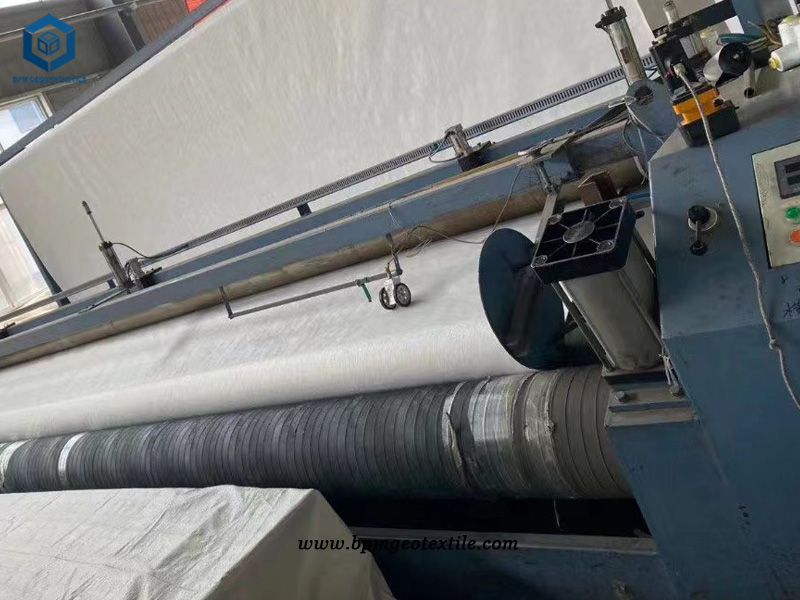
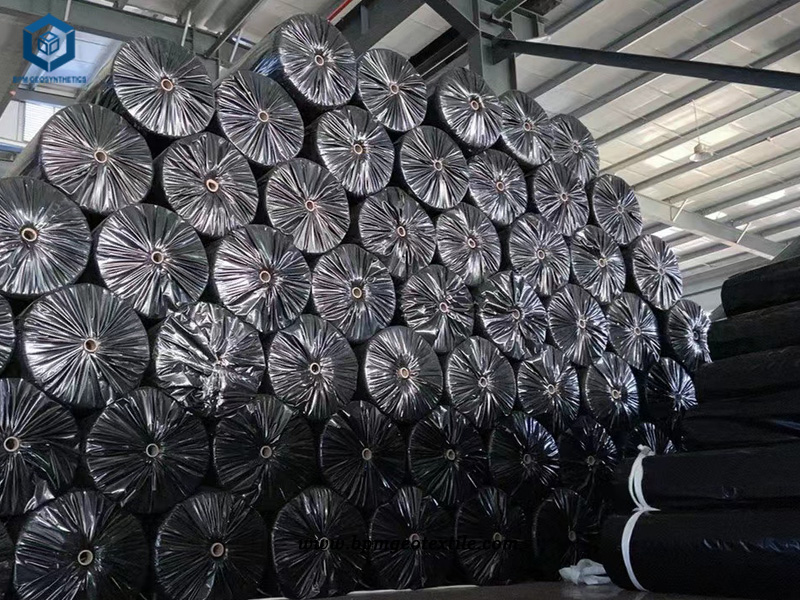
Summary
High strength non woven geotextile is the kind of high performance non woven geotextile fabric which has functions of isolation, filtration, drainage, separation, protection and maintenance, etc. Filament Polyester Non Woven Geotextile is manufactured by the extrusion of fibers which are then laid down on a manufacturing “bed” and then needle punched from both top and bottom to entangle the fibers to produce a dimensionally stable geotextile. Filament Polyester Non Woven Geotextile is widely used for road construction, landfill, cancel, salt pond, etc. Filament Polyester Non Woven Geotextile has the following features.
1.Excellent permeability, filtration, protection Soil, played isolation, drainage filters, protective role;
2.Low cost, excellent price, simple construction, easy to use.
3. Reinforcement in retaining wall backfill.
4. Improve the stability of slope and reinforcement soil, avoid water and soil loss and soil frozen injure.
Specifications of high strength non woven geotextile for embankment reinforcement project in Myanmar
- Total filament geotextile quantity – 109200 square meters
- Filament Geotextile specification – 200 gsm
- Each roll size is 6m*100m
- Two 40HC containers
About BPM
BPM manufactures and wholesales many types of effective and states of the art geotextile, geomembrane, and other geosynthetics to over 36 countries. BPM geosynthetic products are widely used across a variety of industries including waste containment, water containment, aquaculture, industrial project, energy project and mining projects, etc. BPM main customers are from Australia, France, Sweden, UK, Hungary, New Zealand, Poland, Mexico, Ecuador, Brazil, Pakistan, Bangladesh, Thailand, Vietnam, Malaysia, Indonesia, Singapore, Philippines, Sri Lanka, India, UAE, Saudi Arabia, Qatar, Kenya, etc.
BPM is not only manufacturing best quality geosynthetic products but also providing professional design and installation service. OEM, ODM, custom development and fabrication are also available. If you have any questions or inquiries, please fill and submit the following form, we will reply as soon as possible.

